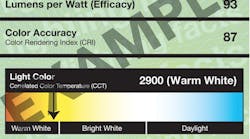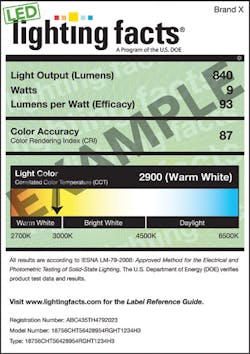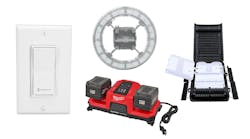The increased emphasis on energy efficiency has helped create a tidal wave of solid-state lighting (SSL) products entering the marketplace. Based on light-emitting diodes (LEDs) instead of the usual filaments, plasma, or gas, SSL offers the potential to be much more energy-efficient than conventional lighting technologies as well as bring other advantages to light, such as spectral tunability, long life, durability, and controllability. However, despite a steady overall improvement in the quality of the LED lighting products on the market over the past few years, they still vary widely in terms of performance.
While the best products can compete with their conventional counterparts in a growing number of applications, there’s no shortage of those that don’t measure up. In fact, some are likely to disappoint. Add to this the fact that manufacturers’ claims are not always accurate, and you can see why those who purchase, specify, or service lighting products often have a hard time separating the wheat from the chaff and fact from fiction when it comes to SSL.
Promoting accuracy and consistency
In response to industry feedback, the U.S. Department of Energy (DOE) launched the LED Lighting Facts program in late 2008 to promote the accurate and consistent reporting of LED product performance claims. The idea behind LED Lighting Facts is that SSL manufacturers who sign up test their products using industry-standard methods (IES LM-79-2008), report the performance results and use the LED Lighting Facts label — which presents key product metrics in an easy-to-read format in order to help users evaluate those products and identify the best options.
The required LED Lighting Facts label metrics include: light output (given in lumens); power consumption (watts); efficacy (lumens per watt); correlated color temperature (CCT), which provides an indication of the light’s color; and color rendering index (CRI), which indicates how well the light shows an object’s true colors. This data is verified by DOE before permission to use the LED Lighting Facts label is granted. Manufacturers choosing to participate in this voluntary program also have the option to include lumen maintenance information as well as whether or not there’s a warranty. More metrics may be added in the future, as the technology continues to develop and needs evolve. It’s important to keep in mind, however, that the label itself is not an endorsement by DOE — but rather a clear and accurate way to report performance results.
A wide-ranging partnership
To date, more than 500 manufacturers have signed up with the program. Rounding out the LED Lighting Facts picture is a diverse network of partners — including lighting designers and specifiers, buyers, distributors and retailers, utilities, and energy-efficiency programs — which pledge to look for and use products that are registered with the program. So far, there are more than 8,500 such products registered, along with over 700 partners. Those numbers continue to grow, indicating just how important a resource the program has become for a wide range of industry stakeholders.
The value of LED Lighting Facts is not limited to its label. The program’s website (www.lightingfacts.com) provides free access to an extensive database of all registered products, which includes not only the data from the LED Lighting Facts label, but also (at the manufacturer’s discretion) additional metrics. These are taken from the LM-79 testing and cover such things as power factor, zonal lumens, beam angle, and center beam candle power. The database also includes special qualifications or recognition the product has received — for example, winning a design competition such as Next Generation Luminaires or being Energy Star-qualified. Users can search this online database by product name, manufacturer, and application, and the search function generates any slice of that data a user needs to see. There’s also a feature to download the information. All products listed in the LED Lighting Facts database must have their market availability confirmed each year in order to remain in the database.
A variety of online tools
The program offers other online tools as well. For example, the Commercial and Residential Product Performance Scales facilitate benchmark comparisons between LED lighting products and their traditional counterparts by comparing performance values for the five mandatory parameters to performance values for those same parameters in traditional residential and commercial lighting technologies. For example, you could compare the performance of a particular LED cove light with the performance of a fluorescent product intended for the same application.
There’s also a list of energy-efficiency programs across the country that offer incentives for LED lighting products, as well as an explanation of the implications of the Energy Independence and Security Act for the lighting industry, and an overview of the Federal Trade Commission consumer lighting label. The LED Lighting Facts products page features a real-time breakdown of the various product types on the growing list of registered products. One last benefit of this voluntary program is you can’t beat the cost — it’s free! For more information, visit www.lightingfacts.com.
Brodrick, Ph.D., is the solid-state lighting portfolio manager for the U.S. Department of Energy, Washington, D.C. He can be reached at [email protected].




